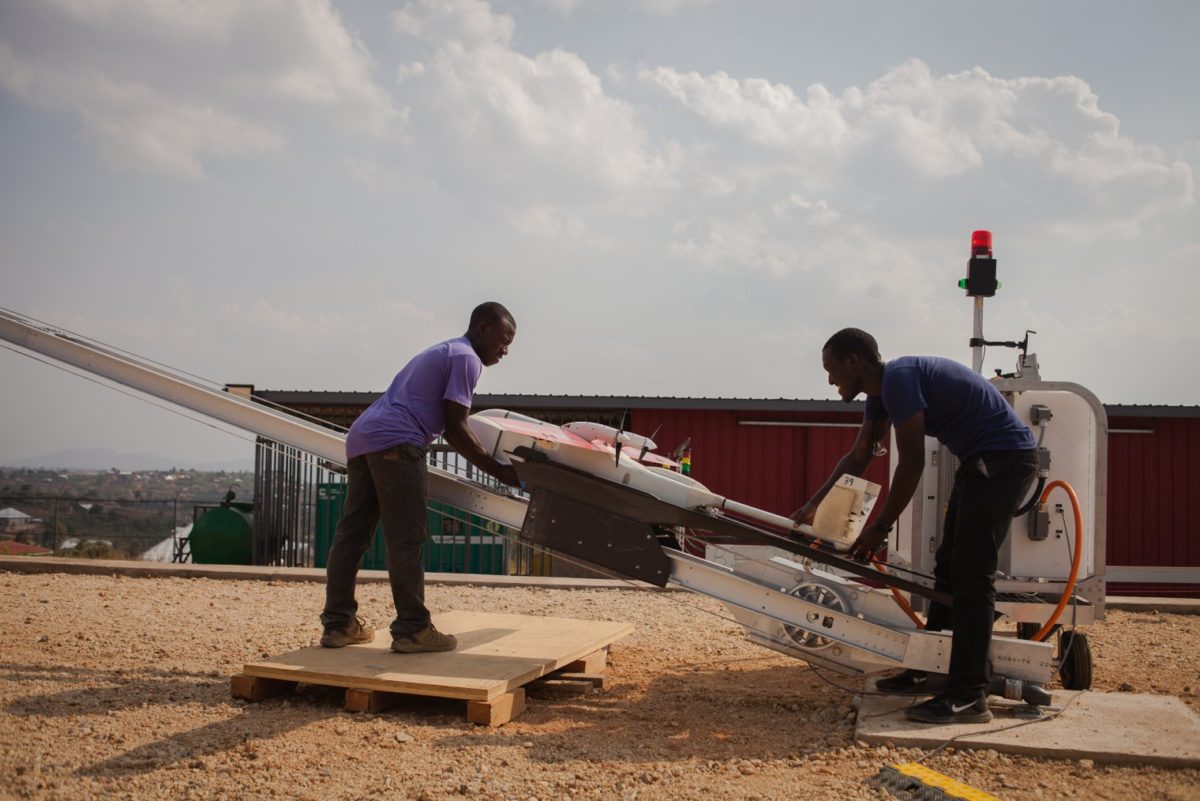Zipline, a startup from San Francisco, has been saving the lives of thousands of people in Rwanda for almost two years now. In addition, they have reduced blood spoilage by 95%. How did an inexperienced startup like Zipline accomplish this within such a short timespan? They are operating a unique, first of a kind – national scale drone-delivery system, that delivers blood, plasma and platelets to hospitals that are located in poorly infrastructured areas. It has transformed Rwanda’s medical supply chain drastically and disrupted the Rwandan logistics industry. So, how do they operate?
The order comes in via a brand new text messaging order system. Within minutes a single employee packages the blood and subsequently the drone is being launched from a portable launching system. The drone is equipped with fixed-wings, two twin electric motors, a gyroscope, gps, and an accelerometer. After launching the drone, it flies directly towards its destination while an operator monitors the route via a tablet and stays in contact with the air traffic control of Rwanda. The drone follows a path that is laid out by the 3-D satellite map and pre-programmed instructions are sent via a navigation system using kinematic satellites and a memory card. Using an advanced inertial navigation system it is able to drop the package within a five metre target area. After dropping the cargo, the drone flies back to the base camp and via a computer regulated system hooks a nylon cord onto the back of the drone, reducing its speed and slowing it down rapidly.
While the results are astonishing and its potential is very clear, there is also some critique. The costs of the project have not been revealed yet by either party. Critics therefore argue, that the invested money should have been spent on needs that have higher priorities, such as improving basic sanitarian facilities, infrastructure and health centres instead of such a expensive technology.
In the end, increasing the volume will most likely lead to lower costs and greater fulfillment of demand, making the technology cheaper and more accessible to other countries as well. In conclusion, the technology has proved its potential to save millions of lives across the world. It seems only a matter of time until it expands into other parts of Africa.
Sources:
*https://techmoran.com/ziplines-new-delivery-drone-is-the-fastest-in-the-world/
*https://www.technologyreview.com/s/608034/blood-from-the-sky-ziplines-ambitious-medical-drone-delivery-in-africa/
*https://www.theguardian.com/global-development/2018/jan/02/rwanda-scheme-saving-blood-drone
*https://www.technologyreview.com/s/608080/drones-to-the-rescue/
Video: https://www.youtube.com/watch?v=nnKnMgWy_tM


That is really interesting! The challenges Zipline faces must have been formidable, though! I wonder what the biggest ones were.. Could it have been teaching people how to use the system? Or maybe there were health issues when delivery failed for some reason or something even completely different. Would you happen to know what the biggest challenges were and are at this point in time, Tim?